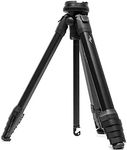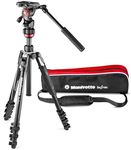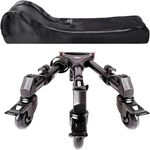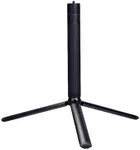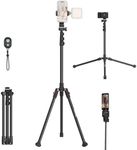Buying Guide for the Best Lightweight Travel Tripod
Choosing the right lightweight travel tripod can significantly enhance your photography experience while on the go. A good travel tripod should be portable, sturdy, and easy to use. Here are some key specifications to consider when selecting the best tripod for your needs.WeightWeight is a crucial factor for a travel tripod because you will be carrying it around for extended periods. A lighter tripod is easier to transport and less cumbersome. Travel tripods typically range from 1 to 3 pounds. If you plan to hike or walk long distances, aim for a tripod closer to 1 pound. For shorter trips or if you need more stability, a slightly heavier tripod might be acceptable.
MaterialThe material of the tripod affects both its weight and durability. Common materials include aluminum and carbon fiber. Aluminum tripods are generally more affordable and durable but heavier. Carbon fiber tripods are lighter and more resistant to vibrations, making them ideal for travel, but they are usually more expensive. Choose aluminum if you need a budget-friendly option and carbon fiber if you prioritize weight and performance.
Folded LengthFolded length determines how compact the tripod is when not in use. This is important for fitting the tripod into your luggage or backpack. Travel tripods can fold down to lengths between 12 to 20 inches. If you have limited packing space, look for a tripod with a shorter folded length. However, ensure that the compact size does not compromise the tripod's stability and height when extended.
Maximum HeightMaximum height is the tallest the tripod can extend, which affects how comfortably you can use it. A taller tripod allows for more versatile shooting angles and is more comfortable for taller users. Travel tripods typically extend to heights between 40 to 60 inches. Consider your own height and the types of shots you plan to take. If you often shoot at eye level, choose a tripod that extends to at least your eye height.
Load CapacityLoad capacity indicates how much weight the tripod can support. This is important to ensure that your camera and any additional equipment are securely held. Travel tripods usually support between 5 to 20 pounds. Check the weight of your camera and heaviest lens, and choose a tripod with a load capacity that exceeds this weight to ensure stability and safety.
Leg SectionsLeg sections refer to the number of segments each leg has, affecting the tripod's stability and compactness. More leg sections allow the tripod to fold smaller but can reduce stability. Travel tripods typically have 3 to 5 leg sections. If you prioritize compactness, choose a tripod with more leg sections. If stability is more important, opt for fewer leg sections.
Head TypeThe head type determines how you can adjust the camera's position. Common types include ball heads and pan-tilt heads. Ball heads are more compact and allow for quick adjustments, making them ideal for travel. Pan-tilt heads offer more precise control but are bulkier. Choose a ball head for ease of use and portability, and a pan-tilt head if you need precise control for specific shots.




